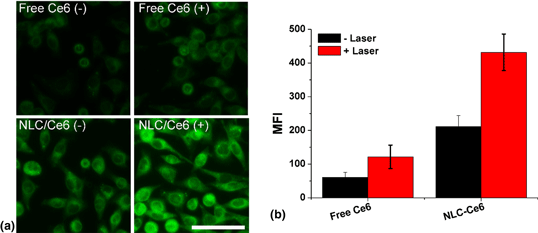Crossref Citations
This article has been cited by the following publications. This list is generated based on data provided by
Crossref.
Fedorenko, Svetlana
Stepanov, Alexey
Bochkova, Olga
Kholin, Kirill
Dovjenko, Alexey
Zairov, Rustem
Nizameev, Irek
Gerasimova, Tatiana
Strelnik, Igor
Voloshina, Alexandra
Sapunova, Anastasia
Gumerova, Syumbelya
Gubaidullin, Aidar
Fedosimova, Svetlana
Evtugyn, Vladimir
Toropchina, Asiya
Karasik, Andrey
and
Mustafina, Asiya
2021.
Tailoring of silica nanoarchitecture to optimize Cu(2−x)S based image-guided chemodynamic therapy agent.
Colloids and Surfaces A: Physicochemical and Engineering Aspects,
Vol. 626,
Issue. ,
p.
126996.
Chen, Jianjiao
Chen, Zhiqiang
Tan, Litao
Yang, Jie
Shen, Lei
Deng, Jun
Jiang, Xin
and
Zou, Dengfeng
2022.
Synthesis of a new chlorin photosensitizer for photodynamic therapy against colon cancer.
Materials Chemistry Frontiers,
Vol. 6,
Issue. 9,
p.
1129.
Khodaverdi, Hamed
Zeini, Maryam Shokrian
Moghaddam, Mehrdad Moosazadeh
Vazifedust, Soheil
Akbariqomi, Mostafa
and
Tebyaniyan, Hamid
2022.
Lipid-based Nanoparticles for the Targeted Delivery of Anticancer Drugs:
A Review.
Current Drug Delivery,
Vol. 19,
Issue. 10,
p.
1012.
Ma, Yunong
Xiao, Fengfeng
Lu, Cuixia
and
Wen, Liewei
2022.
Multifunctional Nanosystems Powered Photodynamic Immunotherapy.
Frontiers in Pharmacology,
Vol. 13,
Issue. ,
Graván, Pablo
Aguilera-Garrido, Aixa
Marchal, Juan Antonio
Navarro-Marchal, Saúl A.
and
Galisteo-González, Francisco
2023.
Lipid-core nanoparticles: Classification, preparation methods, routes of administration and recent advances in cancer treatment.
Advances in Colloid and Interface Science,
Vol. 314,
Issue. ,
p.
102871.
Fulden Aydın, Ümmühan
and
Tuli, Abdullah
2023.
Recent Progress in Pharmaceutical Nanobiotechnology: A Medical Perspective.
Vol. 8,
Issue. ,
p.
25.
Shehata, Mohamed M.
2024.
Anticancer lipid-based drug delivery systems: Basic knowledge and recent applications.
Nano TransMed,
Vol. 3,
Issue. ,
p.
100054.
Alyami, Hanan
Alharthi, Sitah
Alqahtani, Ali Jaber
Ebrahimi Shahmabadi, Hasan
and
Alavi, Seyed Ebrahim
2025.
Enhanced antitumor efficacy of nanostructured lipid carrier co-loaded with docetaxel and 5-fluorouracil for targeted gastric cancer therapy.
Medical Oncology,
Vol. 42,
Issue. 2,
Stefanova, Denitsa
Yordanov, Yordan
Bogdanova, Radostina
Voycheva, Christina
Tzankov, Borislav
Popova, Teodora
Kondeva-Burdina, Magdalena
Tzankova, Virginia
Toncheva-Moncheva, Natalia
Tzankova, Diana
and
Slavkova, Marta
2025.
In Vitro Evaluation of the Safety and Antineoplastic Effects in Gastrointestinal Tumors of Nanostructured Lipid Carriers Loaded with Berberine.
Pharmaceutics,
Vol. 17,
Issue. 3,
p.
331.
Liu, Tiantian
Gu, Yanmei
Zhao, Yang
and
Li, Yumin
2025.
Nanomaterials in gastric cancer: pioneering precision medicine for diagnosis, therapy, and prevention.
Medical Oncology,
Vol. 42,
Issue. 4,
Zhang, Wenyu
Chen, Jingzheng
Wei, Zehao
Song, Jiaqian
Zha, Xinyi
Wang, Deqiang
and
Xu, Min
2025.
Advancements and challenges in immunotherapy for gastric cancer: current approaches and future directions.
Frontiers in Immunology,
Vol. 16,
Issue. ,
